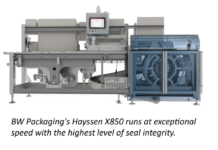The pet food market is booming, valued at $120.87 billion in 2023 and projected to reach $193.65 billion by 2032. With this growth, regulatory compliance has become more and more crucial for manufacturers. Recent pet food recalls have highlighted the importance of stringent safety measures. According to US Food and Drug Administration (FDA) records, there were 16 pet food-related recalls in 2023, involving various products across multiple brands. It is these types of statistics that underscore the need for manufacturers to stay updated with regulatory changes for the utmost in product safety and integrity. This article explores the latest trends and changes in pet food labelling regulations and how to comply with them.
-
US & Canada – All pet food
The FDA regulates pet food labelling at two levels, requiring proper product identification, net quantity statement, name and place of business and a complete list of ingredients by weight. Additionally, the FDA Food Safety Modernization Act (FSMA) of 2011 mandates that all animal food facilities create and implement a food safety plan to prevent contamination.
Major labelling changes approved by FDA and AAFCO in 2023
In 2015, the Association of American Feed Control Officials (AAFCO) began the Pet Food Label Modernization (PFLM) project to update the model regulations for pet food labelling. Approved in September 2023, the goal is to provide transparent, easy-to-understand labelling information in a format familiar to consumers. This meticulous process included multiple rounds of consumer research, workgroups with regulators and pet food industry advisors and open feedback during a public comment period.
Key changes introduced include:
- Nutrition facts box: Resembling human-food labelling, it includes a nutritional adequacy statement.
- Intended use statement: Required on the front display panel to identify the intended life stage and purpose.
- Ingredient statement: Clarifies the use of parentheticals and common names for vitamins.
- Handling and storage instructions: Updated and standardized, with optional icons for consistency.
Each state has its rulemaking process for adopting these regulations. AAFCO recommends a six-year transition period for manufacturers to incorporate the new labelling and packaging requirements fully. Pet owners will see some changes before then, but all packaging should be consistent by the end of the six-year period in 2029.
-
EU – Organic pet food
The EU’s new regulation (Regulation (EU) No. 2023/2419) for organic pet food, effective from May 2024, mandates that products containing less than 95% organic agricultural ingredients cannot be marketed as organic or display the organic logo. This regulation helps achieve high standards in organic labelling and clarity for consumers.
How vision inspection technologies can help with compliance
With the knowledge of what regulations are coming up, how can pet food manufacturers future proof their production lines now? Vision inspection technologies play a crucial role in this. These technologies verify data on pet food labels, offering compliance with regulatory standards. Unlike human inspectors, vision systems never blink or tire, detecting all the defects they are programmed to capture.
These technologies offer several key benefits. Label verification compares production-line packaging against a pre-programed master image, rejecting non-matching products. They can verify that certain product attributes fit in pre-determined parameters, such as cap or label placement and reject out-of-tolerance products. Additionally, they can confirm that items in a case or package are as specified and reject them if they do not meet the specifications.
Other technologies that play their part
There are other technologies worth considering for manufacturers looking to future-proof their pet food production lines. These include precision weighing, where checkweighing helps products to meet net quantity statements. Physical contaminant detection solutions, such as metal detection and x-ray inspection can be used to identify and remove foreign bodies that may otherwise be missed. Combination technologies integrate vision inspection, checkweighing and physical contaminant detection into one machine, saving space and streamlining operations. Furthermore, data management software, like ProdX from Mettler-Toledo, securely and accurately captures and records inspection information, giving easy access to production data, which is essential for regulatory compliance and maintaining consumer trust.
Conclusion
The nature of pet food is changing, but its importance to consumers is not. Manufacturers must adopt advanced technologies, such as vision inspection to achieve compliance, enhance product safety and maintain consumer confidence.
(Miriam Krechlok is segment marketing manager, Mettler-Toledo product inspection)
IndiFoodBev — authentic, impactful and influential
An English-language food and beverage processing and packaging industry B2B platform in print and web, IndiFoodBev is in its third year of publication. It is said that the Indian food and beverage industries represent approximately US$ 900 billion in revenues which implies more than 20% of the country’s GDP. Eliminating the wastage on the farmside can help to deliver more protein to a higher number of the population apart from generating sizable exports. The savings in soil, seeds, water, fertilizer, energy and ultimately food and nutrition could be the most immense contribution that country is poised to make to the moderation of climate change.
To improve your marketing and grow sales to the food and beverage processing and packaging industry, talk to us. Our research and consulting company IppStar [www.ippstar.org] can assess your potential and addressable markets in light of the competition. We can discuss marketing, communication, and sales strategies for market entry and growth.
Suppliers and service providers with a strategy and budget for targeted marketing can discuss using our hybrid print, web, video, and social media channels to create brand recognition linked to market relevance. Our technical writers are ready to meet you and your customers for content.
The second largest producer of fruit and vegetables in the world is continuously expanding processing capacities and delivery systems with appropriate innovative technologies. We cover product and consumer trends, nutrition, processing, research, equipment and packaging from farm to thali. Get our 2025 media kit and recalibrate your role in this dynamic market. Enhance your visibility and relevance to existing markets and turn potential customers into conversations. Ask for a sample copy of our bi-monthly in print or our weekly IndiFoodBev eZine each Wednesday.
For editorial info@ippgroup.in — for advertisement ads1@ippgroup.in and for subscriptions subscription@ippgroup.in
Naresh Khanna – 10 February 2025
Subscribe Now











